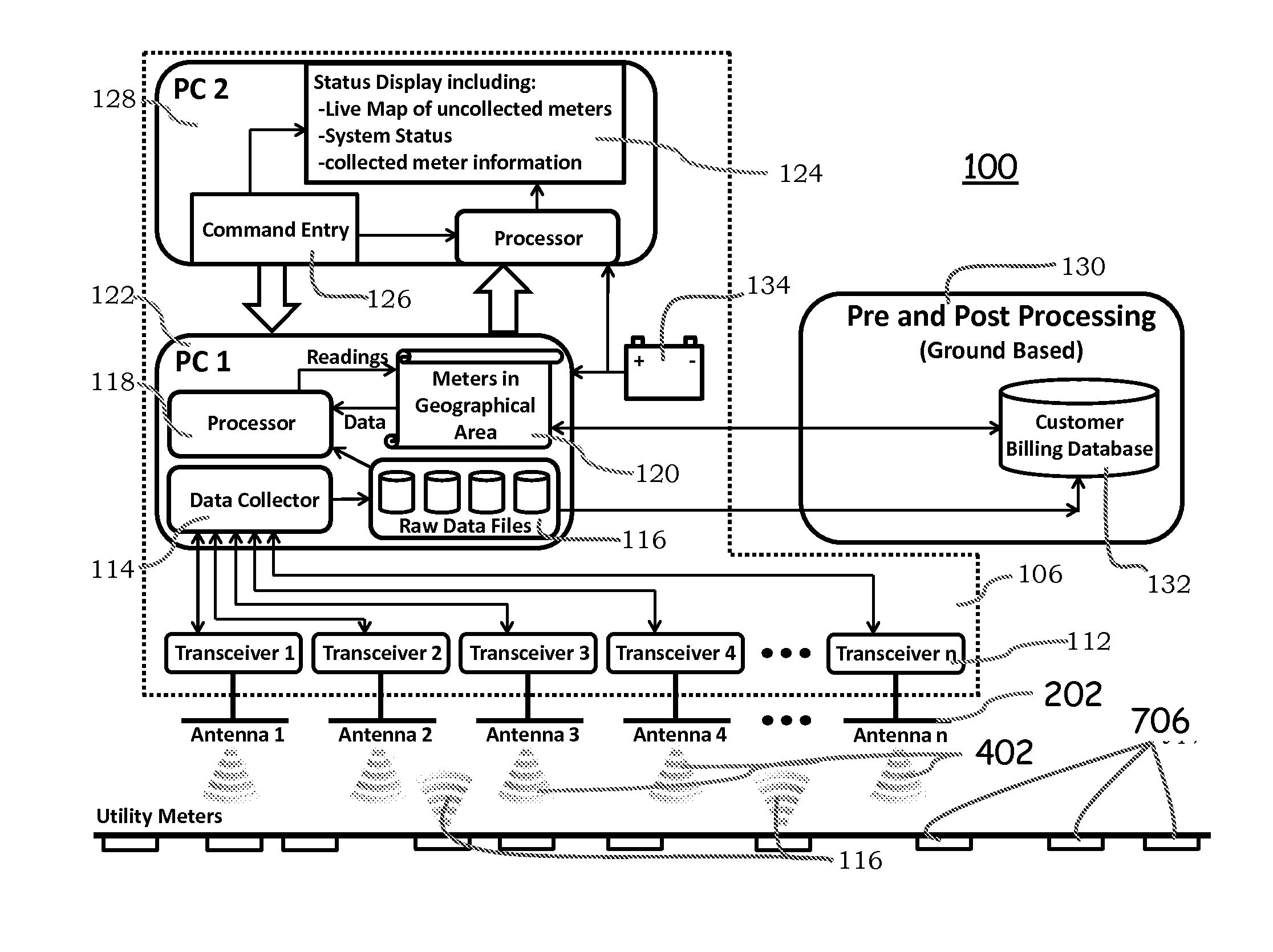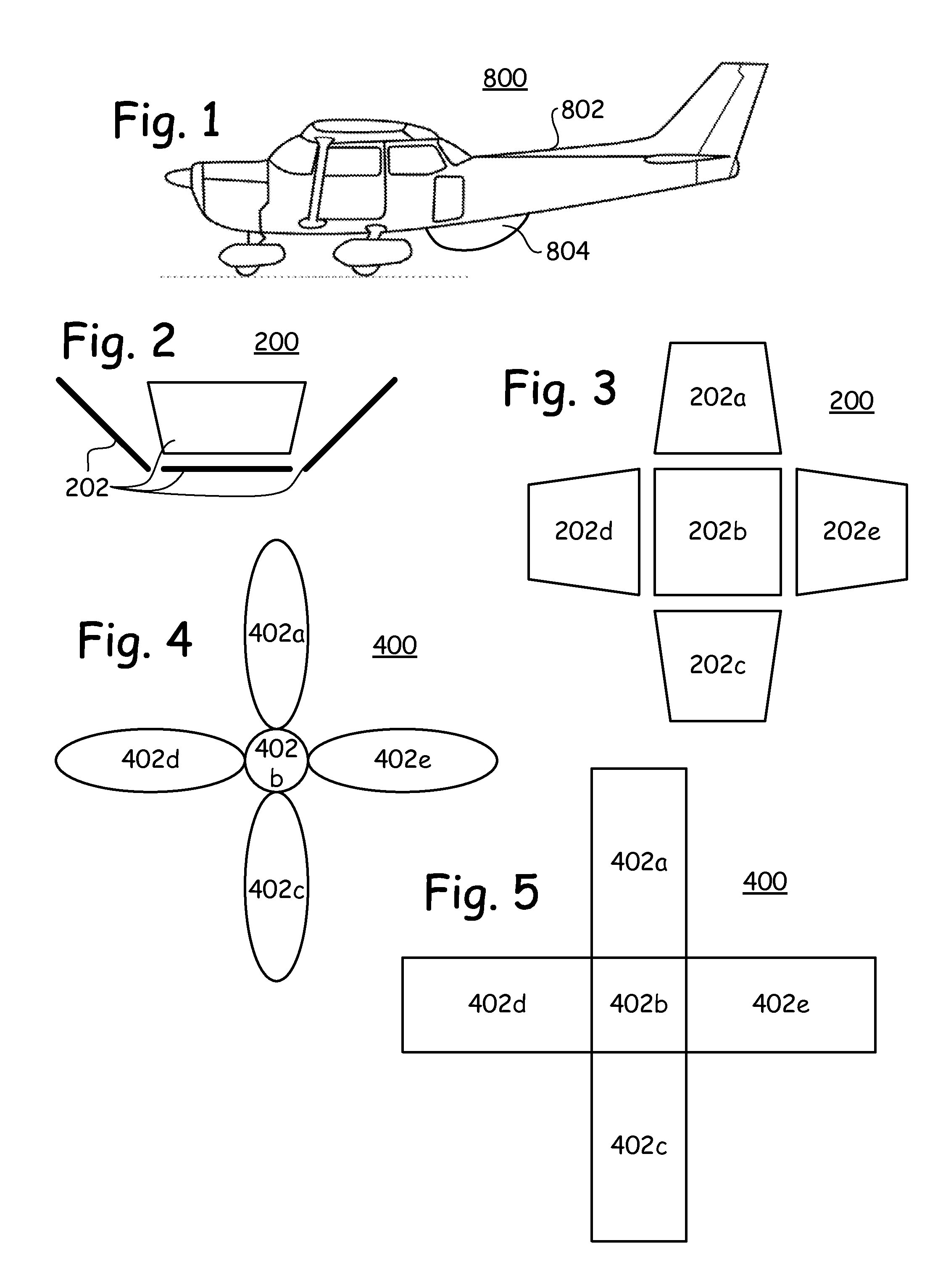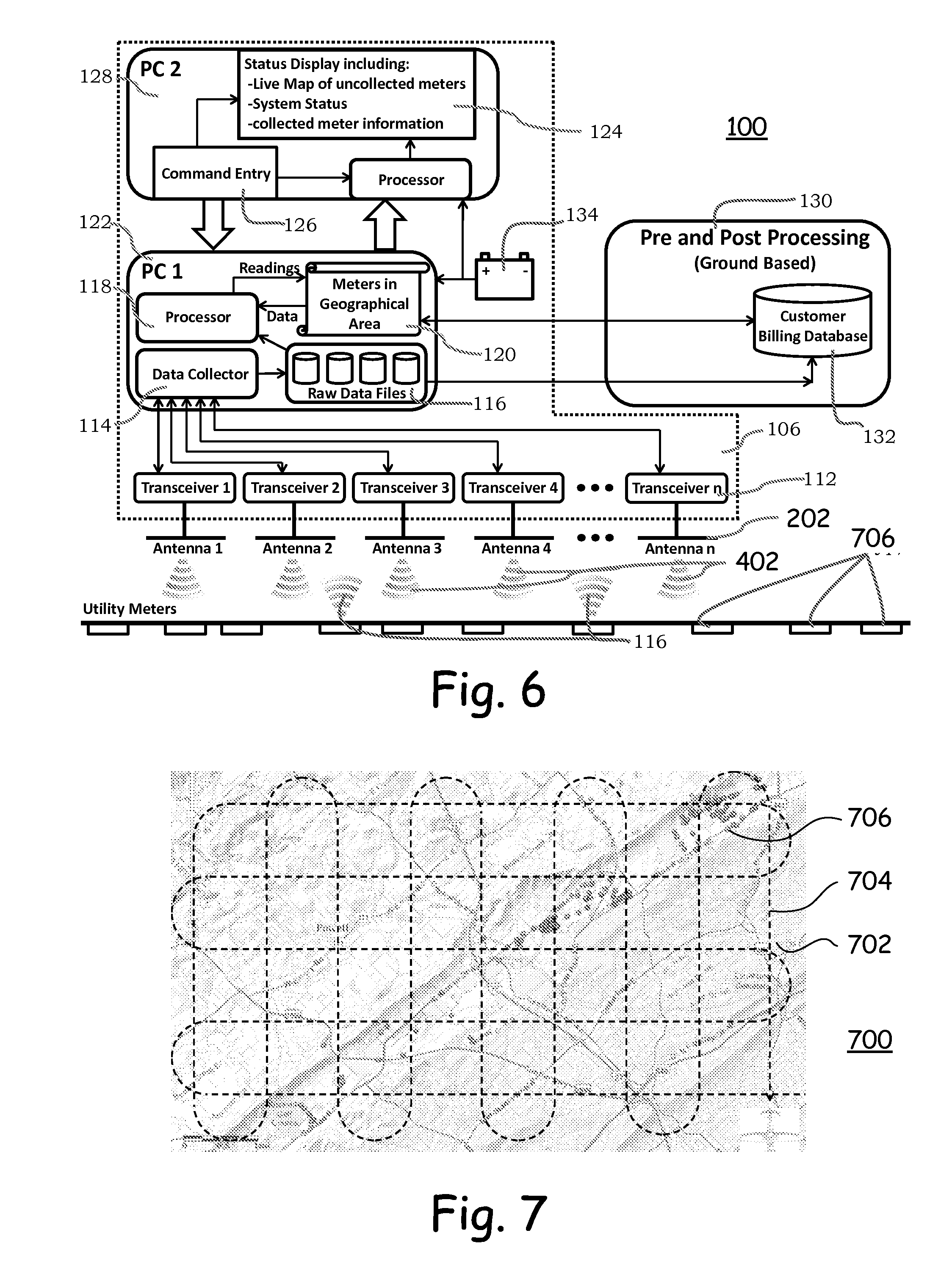Airborne Data Collection
a technology for airborne data and meters, applied in the field of reading utility meters, can solve the problems of high labor and time consumption of the reading system of meters, high cost, and many meters not being read as frequently, and achieve the effect of maximum ground coverag
- Summary
- Abstract
- Description
- Claims
- Application Information
AI Technical Summary
Benefits of technology
Problems solved by technology
Method used
Image
Examples
Embodiment Construction
[0029]With reference now to FIG. 1, there is depicted a basic embodiment 800 of a meter data collection system 804 and an airborne platform 802. The platform 802 is a platform that is not continuously physically terrestrially tethered or depending, such as an airplane, glider, projectile, helicopter, drone, balloon, dirigible, satellite, or other such. The platform 802 in some embodiments is piloted from within the platform 802, and in other embodiments is remotely piloted. Piloting of the platform 802 is by human operator in some embodiments, and computer controlled in other embodiments. In some embodiments the airborne platform 802 collects meter data at an altitude of up to about five thousand feet. In one embodiment, the altitude is about one thousand feet, and provides ground coverage of about three thousand feet. During meter data collection, the platform 802 travels at a speed of up to about two hundred miles per hour, in some embodiments.
[0030]In operation, and with referenc...
PUM
 Login to View More
Login to View More Abstract
Description
Claims
Application Information
 Login to View More
Login to View More - R&D
- Intellectual Property
- Life Sciences
- Materials
- Tech Scout
- Unparalleled Data Quality
- Higher Quality Content
- 60% Fewer Hallucinations
Browse by: Latest US Patents, China's latest patents, Technical Efficacy Thesaurus, Application Domain, Technology Topic, Popular Technical Reports.
© 2025 PatSnap. All rights reserved.Legal|Privacy policy|Modern Slavery Act Transparency Statement|Sitemap|About US| Contact US: help@patsnap.com



